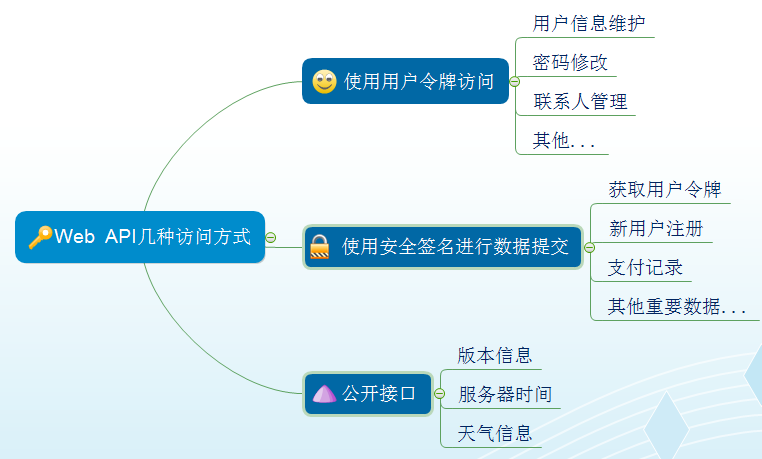iOS開發UI篇―以微博界面為例使用純代碼自定義cell程序編碼全過程(一)
編輯:關於IOS
一、storyboard的處理
直接讓控制器繼承uitableview controller,然後在storyboard中把繼承自uiviewcontroller的控制器干掉,重新拖一個tableview controller,和主控制器進行連線。 項目結構和plist文件 二、程序邏輯業務的處理 第一步,把配圖和plist中拿到項目中,加載plist數據(非png的圖片放到spooding files中) 第二步,字典轉模型,完成plist中數據的加載。屬性的注意點(number vip是bool類型,本質是整型的)kvc會智能的把nsnumber轉換成bool型的。 第三步,懶加載。 第四步,有了數據之後直接實現數據源方法 (1)一共有幾組(如果有一組的,那麼可以不寫,默認為一組) (2)每組一共有多少行(數組有多少個元素,就有多少組) (3)展示數據 1)到緩存中取cell 2)沒有的話就創建 3)設置數據 4)返回cell 三、代碼 視圖部分 YYweiboCell.h文件 復制代碼 1 // 2 // YYweiboCell.h 3 // 微博基本信息展示 4 // 5 // Created by 孔醫己 on 14-6-2. 6 // Copyright (c) 2014年 itcast. All rights reserved. 7 // 8 9 #import <UIKit/UIKit.h> 10 11 @class YYweiboModel; 12 @interface YYweiboCell : UITableViewCell 13 14 @property(nonatomic,strong)YYweiboModel *weibo; 15 @end 復制代碼 YYweiboCell.m文件 復制代碼 1 // 2 // YYweiboCell.m 3 // 微博基本信息展示 4 // 5 // Created by 孔醫己 on 14-6-2. 6 // Copyright (c) 2014年 itcast. All rights reserved. 7 // 8 9 #import "YYweiboCell.h" 10 #import "YYweiboModel.h" 11 12 @interface YYweiboCell() 13 /** 14 * 頭像 15 */ 16 @property(nonatomic,weak)UIImageView *iconView; 17 /** 18 * vip圖標 19 */ 20 @property(nonatomic,weak)UIImageView *vipView; 21 /** 22 * 微博昵稱 23 */ 24 @property(nonatomic,weak)UILabel *nameLabel; 25 /** 26 * 配圖 27 */ 28 @property(nonatomic,weak)UIImageView *pictureView; 29 /** 30 * 正文 31 */ 32 @property(nonatomic,weak)UILabel *textLab; 33 34 @end 35 36 @implementation YYweiboCell 37 38 //重寫構造方法,讓自定義的cell一創建出來就有五個子控件 39 - (id)initWithStyle:(UITableViewCellStyle)style reuseIdentifier:(NSString *)reuseIdentifier 40 { 41 self = [super initWithStyle:style reuseIdentifier:reuseIdentifier]; 42 if (self) { 43 //1.添加頭像 44 UIImageView *img=[[UIImageView alloc]init]; 45 [self.contentView addSubview:img]; 46 self.iconView=img; 47 48 //2.添加昵稱 49 UILabel *namelab=[[UILabel alloc]init]; 50 [self.contentView addSubview:namelab]; 51 self.nameLabel=namelab; 52 53 //3.vip 54 UIImageView *vipview=[[UIImageView alloc]init]; 55 [self.contentView addSubview:vipview]; 56 self.vipView=vipview; 57 58 //4.正文 59 UILabel *textlab=[[UILabel alloc]init]; 60 [self.contentView addSubview:textlab]; 61 self.textLab=textlab; 62 63 //5.圖片 64 UIImageView *picture=[[UIImageView alloc]init]; 65 [self.contentView addSubview:picture]; 66 self.pictureView=picture; 67 } 68 return self; 69 } 70 71 /** 72 * 重寫set方法 73 * 74 * @param weibo 微博 75 */ 76 -(void)setWeibo:(YYweiboModel *)weibo 77 { 78 //不要忘了,記錄傳遞進來的模型 79 _weibo=weibo; 80 //給子控件賦值數據 81 [self settingData]; 82 //設置子控件的frame 83 [self settingFrame]; 84 } 85 86 /** 87 * 對子控件的數據進行設置 88 */ 89 -(void)settingData 90 { 91 //1.設置頭像的數據 92 self.iconView.image=[UIImage imageNamed:_weibo.icon]; 93 94 //2.設置vip圖標的數據 95 self.vipView.image=[UIImage imageNamed:@"vip"]; 96 97 //3.設置正文內容的數據 98 self.textLab.text=_weibo.text; 99 100 //4.設置配圖的數據 101 self.pictureView.image=[UIImage imageNamed:_weibo.picture]; 102 103 //5.設置微博昵稱數據 104 self.nameLabel.text=_weibo.name; 105 } 106 107 108 /** 109 * 設置子控件的Frame 110 */ 111 -(void)settingFrame 112 { 113 //1.設置頭像的frame 114 CGFloat padding=10; 115 CGFloat iconViewX=padding; 116 CGFloat iconViewY=padding; 117 CGFloat iconViewW=30; 118 CGFloat iconViewH=30; 119 120 self.iconView.frame=CGRectMake(iconViewX, iconViewY, iconViewW, iconViewH); 121 122 123 #warning 未完成 124 } 125 @end 復制代碼 數據模型部分 YYweiboModel.h文件 復制代碼 1 // 2 // YYweiboModel.h 3 // 微博基本信息展示 4 // 5 // Created by 孔醫己 on 14-6-2. 6 // Copyright (c) 2014年 itcast. All rights reserved. 7 // 8 9 #import <Foundation/Foundation.h> 10 11 @interface YYweiboModel : NSObject 12 /** 13 * 昵稱 14 */ 15 @property(nonatomic,copy)NSString *name; 16 /** 17 * 正文 18 */ 19 @property(nonatomic,copy)NSString *text; 20 /** 21 * 頭像 22 */ 23 @property(nonatomic,copy)NSString *icon; 24 /** 25 * 配圖 26 */ 27 @property(nonatomic,copy)NSString *picture; 28 /** 29 * 是否是vip 30 */ 31 @property(nonatomic,assign)BOOL vip; 32 33 //接口 34 -(instancetype)initWithDict:(NSDictionary *)dict; 35 +(instancetype)weiboModelWithDict:(NSDictionary *)dict; 36 @end 復制代碼 YYweiboModel.m文件 復制代碼 1 // 2 // YYweiboModel.m 3 // 微博基本信息展示 4 // 5 // Created by 孔醫己 on 14-6-2. 6 // Copyright (c) 2014年 itcast. All rights reserved. 7 // 8 9 #import "YYweiboModel.h" 10 11 @implementation YYweiboModel 12 13 -(instancetype)initWithDict:(NSDictionary *)dict 14 { 15 if (self = [super init]) { 16 //使用KVC 17 [self setValuesForKeysWithDictionary:dict]; 18 } 19 return self; 20 } 21 22 /** 23 * 工廠方法 24 * 25 * @param dict 字典 26 * 27 * @return 模型 28 */ 29 +(instancetype)weiboModelWithDict:(NSDictionary *)dict 30 { 31 return [[self alloc]initWithDict:dict]; 32 } 33 @end 復制代碼 主控制器部分 YYViewController.h文件 #import <UIKit/UIKit.h> @interface YYViewController : UITableViewController @end YYViewController.m文件 復制代碼 1 // 2 // YYViewController.m 3 // 微博基本信息展示 4 // 5 // Created by 孔醫己 on 14-6-2. 6 // Copyright (c) 2014年 itcast. All rights reserved. 7 // 8 9 #import "YYViewController.h" 10 #import "YYweiboModel.h" 11 #import "YYweiboCell.h" 12 13 @interface YYViewController () 14 @property(nonatomic,strong)NSArray *weibos; 15 16 @end 17 18 @implementation YYViewController 19 20 - (void)viewDidLoad 21 { 22 [super viewDidLoad]; 23 } 24 25 #pragma mark -懶加載 26 -(NSArray *)weibos 27 { 28 if (_weibos==Nil) { 29 NSString *fullpath=[[NSBundle mainBundle]pathForResource:@"statuses.plist" ofType:nil]; 30 NSArray *arrayM=[NSArray arrayWithContentsOfFile:fullpath]; 31 32 NSMutableArray *models=[NSMutableArray arrayWithCapacity:arrayM.count]; 33 for (NSDictionary *dict in arrayM) { 34 YYweiboModel *weibomodel=[YYweiboModel weiboModelWithDict:dict]; 35 [models addObject:weibomodel]; 36 } 37 _weibos=[models copy]; 38 } 39 return _weibos; 40 } 41 42 #pragma mark- 數據源方法 43 //返回多少組 44 //這裡可以不寫,默認返回一組 45 -(NSInteger)numberOfSectionsInTableView:(UITableView *)tableView 46 { 47 return 1; 48 } 49 //每組多少行 50 -(NSInteger)tableView:(UITableView *)tableView numberOfRowsInSection:(NSInteger)section 51 { 52 return self.weibos.count; 53 } 54 //每組每行的數據-設置cell 55 -(UITableViewCell *)tableView:(UITableView *)tableView cellForRowAtIndexPath:(NSIndexPath *)indexPath 56 { 57 //1.到緩存中去取cell 58 static NSString *ID=@"ID"; 59 //2.沒有則創建cell 60 YYweiboCell *cell=[tableView dequeueReusableCellWithIdentifier:ID]; 61 if (cell==nil) { 62 cell=[[YYweiboCell alloc]initWithStyle:UITableViewCellStyleDefault reuseIdentifier:ID]; 63 } 64 65 //3.設置cell的數據 66 cell.weibo=self.weibos[indexPath.row]; 67 //4.返回cell 68 return cell; 69 70 } 71 72 #pragma mark- 隱藏狀態欄 73 -(BOOL)prefersStatusBarHidden 74 { 75 return YES; 76 } 77 @end 復制代碼 階段性展示: 四、補充說明 1對於展示數據部分的補充說明: 設置數據的時候遇到新的問題:uitableviewcell默認只有一個imageview,一個tabletext和一個詳細三個子控件可以用,但是這個微博至少有四個。系統提供的cell不能滿足需求,那麼我們就在系統提供的cell的基礎上為它增加一些功能,新建一個類,自定義cell,讓它繼承自uitableviewcell。 不用系統的,用自己定義的cell,把自定義的cell頭文件導入,還是先去緩存中找,如果找不到就創建一個自定義的cell。創建玩自定義cell後,就應該給cell設置數據,按照封裝的思想,設置數據的時候,你把數據給我,我自己愛怎麼設置就怎麼設置。所以把當前的模型取出來,傳遞給我cell中得一個屬性,我自己重寫set方法完成賦值。在cell裡面應該增加一個屬性,用於接收傳入的模型。 此時,應該賦值數據,並對系統原有的封裝和操作進行分析。在以前創建的系統的cell一創建的時候默認就有三個子控件提供給我們使用。自定義的cell按照實際的需求(需要創建5個子控件),我們也應該以創建出一個cell來就能夠提供五個子控件供我們使用。 在哪個地方可以以創建出來就擁有某些東西呢?當然是在initwith初始化方法中完成(構造方法讓我們的對象一創建出來就擁有某些東西),為了讓我自定義的cell一創建出來就有三個imageview兩個label,應該重寫構造。系統自動填好(你很有可能會用到)。在構造方法中,讓自定義的cell和系統的cell一樣,以創建出來就擁有一些子控件提供給我們使用。 2在自定義cell部分的說明: A.創建控件,添加並賦值給屬性。 1.創建頭像 2.創建昵稱 3.創建vip 4創建正文 5.創建配圖 注意點:uiimageview iconview名稱不能寫成是imageview(他的父類叫imageview,那麼不能在子類中定義一個imageview,不然到時候它怎麼知道是要調用哪個?不能和系統自帶的重名)。 創建好之後,添加到contentview中。可以進入到頭文件中查看注釋:如果你自定義一個cell,如果要添加view的時候,建議添加到contentview中。 當在外部創建一個cell的時候,調用他的初始化構造方法,首先就來到構造方法中,添加5個控件到cell中。為什麼不設置數據(系統的也沒有設置數據)添加數據,將來設置模型的時候再添加。 B.如何設置數據? 在傳遞模型給他的時候,重寫它的set方法,拿到外界傳遞進來的數據,給它設置數據就完了。 重寫set方法:在set方法中,應該做兩件事情。 (1)設置子控件的數據 (2)設置子控件的frame,因為如果不設置frame的話,子控件根本顯示不出來。(不能在init方法中設置控件的frame) 邏輯:因為子控件的frame高度等是依賴於數據的,需要根據數據來確定,所以只能在拿到數據的時候才能設置子控件的frame,在下面的set方法中要拿到上面添加的控件,怎麼拿?是否應該把上面的子控件通過屬性保存一下。控件一般用weak,但是用strong也可以。通過屬性保存之後,下面才能進行賦值。相關文章
+



